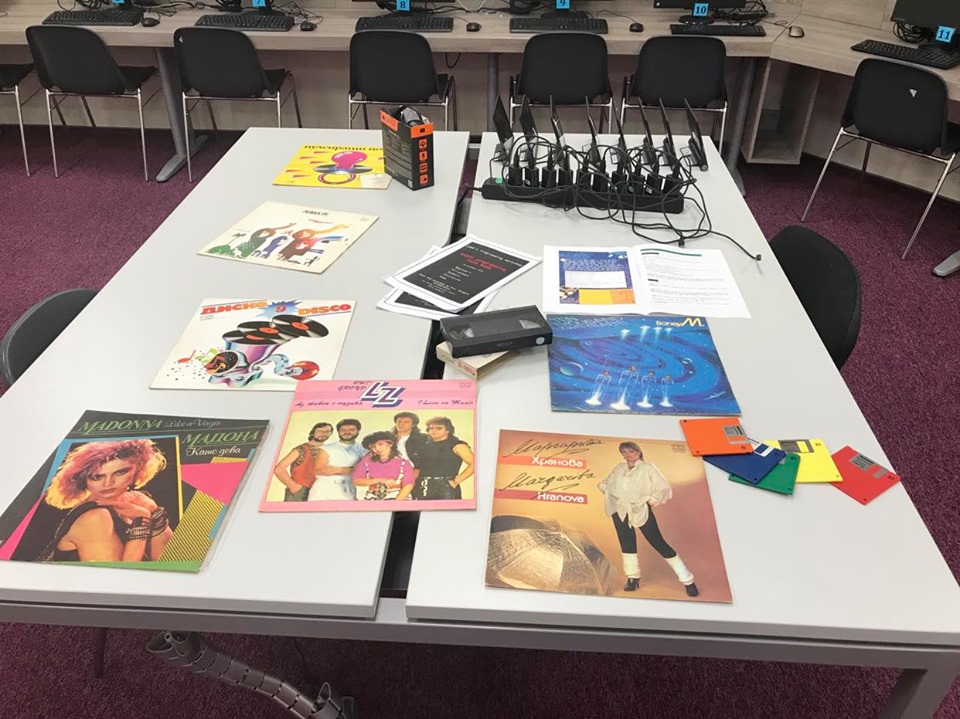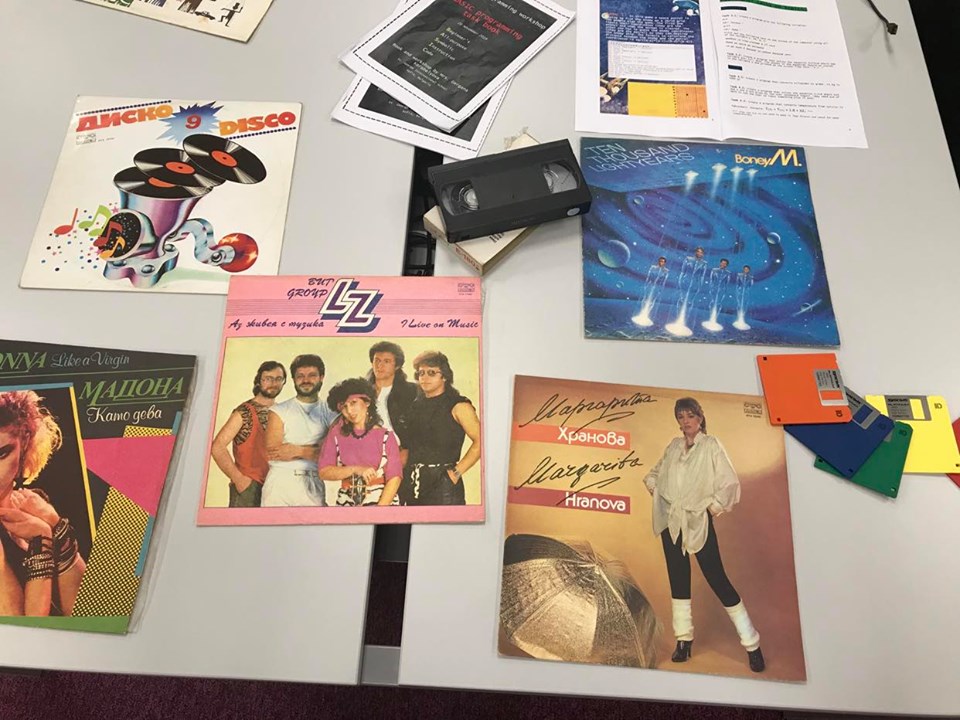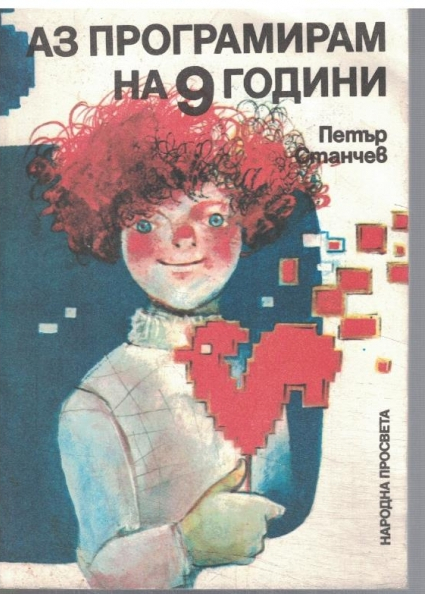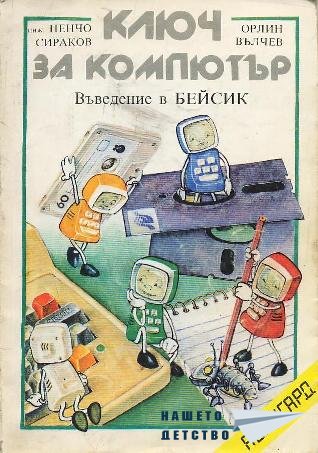My strange attraction to programming languages that are very old and no longer used led me to BASIC. I liked this language so much that I decided to host a one hour long BASIC workshop for the students at the school where I teach. I found a lot of interesting materials and came up with fun tasks that I decided to share with those who had the interest and desire to go back 40 years to a time when life and programming were much simpler. I didn’t really set an age limit for participation. At our school, there were several 4rd and 5th graders who were great at Scratch programming and taking extra courses in C# and HTML. This led me to put a lower limit for participation. The workshop turned out to be a total hit and the students spent weeks discussing it, talking about it and bragging in front of others that they had participated 🙂 It was an enriching event for both me and the kids. Now I will talk about the organization and parts of this event.
Organization
Advertising (lol) – I had to somehow advertise this workshop so that more students would know about it and come to witness my enthusiasm and cool BASIC skills. I have to mention that the workshop was free and organized voluntarily by me, prepared for about 3 weeks. During this time I had to ask permission to hold the workshop from the principal of the school, come up with the whole concept, organize things in my head and think of a plan for the 60 minutes, provide the necessary materials and equip the computer room with the Just Basic program v2.0. In order for more students to know about the workshop, I did two things.
- I created a poster (in Adobe Photoshop) about the event, which I printed on some thick A3 paper. I put that poster up at several key places around the school. This is how the poster looked like:

- After each class I taught (all grades and classes from grades 4 to 11 – I had 16 different classes in total that year), I mentioned the workshop to the whole class and then personally invited the students who I knew were interested in technology, computers and programming . I kept a list of the enrolled students, since the seats in the computer lab are limited – 22 computers in total.
Atmosphere – I created some 80s-style presence by putting some posters on the walls (taken from Google and printed on A4 paper), of popular movies and comics of the 80s. In addition, I found and brought to the classroom several records with music from the 80s from the collection that my grandparents keep (LZ, Madonna, Boney M, etc.). I also found some video tapes from my childhood (Shrek and Beauty and the Beast). I also bought some new and blank 3.5 inch floppy disks (diskettes), which were for decoration at first, but then I demonstrated their impressive 1.44 MB capabilities in action. I put the records, video tapes and diskettes on a large table in the middle of the computer lab so that they can be seen from anywhere in the room. During the workshop, I showed each item, told a little about it, and gave the students a look and let them touch the items.


Music – Music would also add to the atmosphere, so it had to be thought of. I made a YouTube playlist of cool and iconic songs from the 80s, which I played in the background during the workshop. In the short 1-minute breaks between tasks, I turned up the music and the students had a lot of fun. Some were literally amazed that they knew a certain song and had heard it, having no idea that it was so “old”. This is a link to the YouTube playlist I created.
Literature – I brought the two books that taught me BASIC – “I program at 9 years old” and “Key for a computer”.


I used these books to show and recommend to the students (although they are hard to find and already have some antique value), and also for reference if I don’t remember something or if something doesn’t work in a program. In addition, I developed a short guide containing some theory, a few problems and the code of ready-made, already solved problems. I printed as many copies of this guide as there were computers in the computer lab – 22, one for each student. This is how I ensured that everyone would know what to do and there would be no people walking around the room bored. Also, the group of students at the workshop was an absolute mix – there were students from 3rd, 4th, 6th, 7th, 8th and 10th grade, which meant that some would be faster and sharper, while others would need more time. I used an average pace explaining each task on the white board, but if a student had already solved the particular task, they could easily read the next page of the manual and code at their own faster pace. At the end of the guide, I put a long program that, after writing and running, was a fun game of coordinates. This ensured that whenever the older students (who were faster) finished, they would have something to do for the rest of the workshop instead of being bored and disrupting the discipline. The strange thing was that even the 3rd graders were able to do all the programs from the manual without the game at the end.
You can download the manual I created in both PDF and DOCX if you follow these links:
Budget – As a budget for the organization of the workshop, I can mention the 21 BGN I gave to Econt (delivery company) for the shipment of what I ordered from the Internet. I ordered 6 colorful floppy disks for 1 lev each (that is around $0.50), and an external floppy disk drive with USB, which cost 10 leva ($5; later it turned out that I have such a drive but I forgot about it… but now I have two haha) Delivery with Econt cost about BGN 5. Because I held the workshop at the school where I teach, I didn’t have to pay for room rent, paper to print the posters or the manual or anything else.
How did the workshop go?
Short answer – Brilliant! I welcomed the students in the computer lab to the sounds of Modern Talking – “Cheri cheri lady” 🙂 This immediately brought some 80s mood and smiles even while the students were choosing a computer. Everyone settled in and we started. I did a short 3-4 minute intro into the decade we’re moving into with BASIC. This I did with the background of this presentation, click to download. I told the students about Pravets computers (look them up! Bulgaria used to manufacture some pretty cool computers for Europe and the whole world back in the 80s), about the young Madonna, about the strange disco fashion, etc. I then handed out the manuals and started explaining the basics and syntax along with the first task. The students started working on it and I played the YouTube playlist in the background. Things went naturally and easily, all the children were very enthusiastic and came to really learn something interesting. When I saw that most of them were ready, I moved on to explanations for the next task and so on until the end. In the last 5 minutes I was even able to play the coordinates coding game with the older students and it was brilliant!
Conclusions:
I had a lot of fun at this workshop, and so did the students. I think that both sides were able to learn something new and enrich each other. In addition, I also understood that it’s not so difficult to organize such an event, as long as you have the time, desire and little bit of funds. After the workshop, many students asked me “And when will the next workshop be?”, “Will there be a 90s programming workshop?”, “Can you organize something like that every Wednesday?”. These questions filled my soul with warmth and made me sincerely happy. I’m far from the idea that I can inspire and be the “guru” they need in every lesson and every possible minute, but still, in those rare moments when I actually manage to touch them along the thin strings of curiosity, it really makes me feel satisfied and useful. Like James Bond, who has succeeded in his important mission.